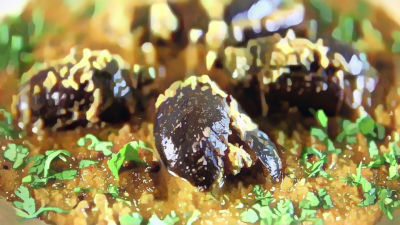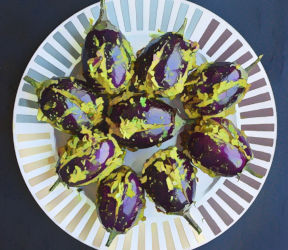
Climate and soil
Temperatures of 20-30 degrees celsius. Single monsoon season lasting four months from June to September. Rainfall amount 700 mm/year. Basaltic soil (black cotton soil).
Seed to plant
We got a pack of seeds from cousins that have a farm that produced really tasty and pretty, round, small brinjal. Plant a seed at a time 20 inches apart at one inch depth. Water once a day.
Timeline and harvest
Plant all year round (avoid peak summer). Two weeks from seed to germination. Two months from seed to first harvest. Brinjal is self-pollinating. Gentle breeze or light flower-shaking helps the process. 10 x 7 feet area gives 250 grams of brinjal once every 4 days for 7 months. Market rate of total harvested produce is Rs. 260/-
Treatment
Jeevamrutha = 1 part cow dung + 1 part cow urine + 0.2 parts jaggery + 0.2 parts pulse flour and some soil. Cover, keep in shade, mix thrice a day. Incubate and use. Apply once a week in the first month and occasionally after that.
Ecosystem function
Moths lay their eggs on Brinjal leaves and eat them too. Beetles like brinjals as well.
Nutrition
Brinjal have some protein and a little manganese.
Storage
Seeds - We have not tried a second generation of plants from the same seeds. But this is our plan: grow the brinjal till over ripe and yellowish-brown on the plant. Chop and blitz the the brinjal and shake with water till the seeds separate out. Dry and store the seeds. Brinjal - Since it grows nearly all year around, we have not tried to store it. You can make brinjal pickle if keen.
Brinjal recipes
More in this category
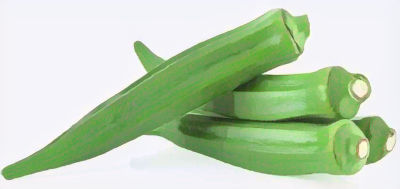 Okra
Lady’s Finger | Okra | Bhindi | Bendakay Learn more!
Okra
Lady’s Finger | Okra | Bhindi | Bendakay Learn more!
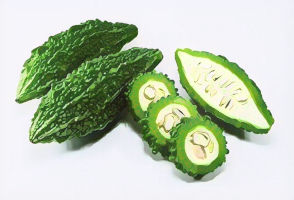 Bitter gourd
Bitter gourd | Bitter melon | Karela | Kakarkay Learn more!
Bitter gourd
Bitter gourd | Bitter melon | Karela | Kakarkay Learn more!
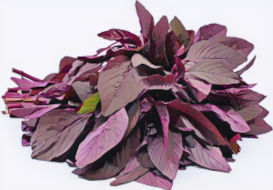 Amaranthus
Amaranthus | (Lal) Math | Thotakoora Learn more!
Amaranthus
Amaranthus | (Lal) Math | Thotakoora Learn more!
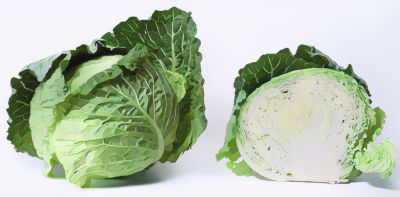 Cabbage
Cabbage | Gobi Learn more!
Cabbage
Cabbage | Gobi Learn more!
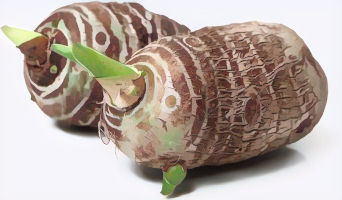 Colocasia
Colocasia | Taro | Arvi | Alu Learn more!
Colocasia
Colocasia | Taro | Arvi | Alu Learn more!
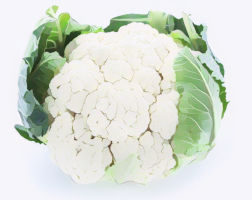 Cauliflower
Cauliflower | Phool gobi Learn more!
Cauliflower
Cauliflower | Phool gobi Learn more!
